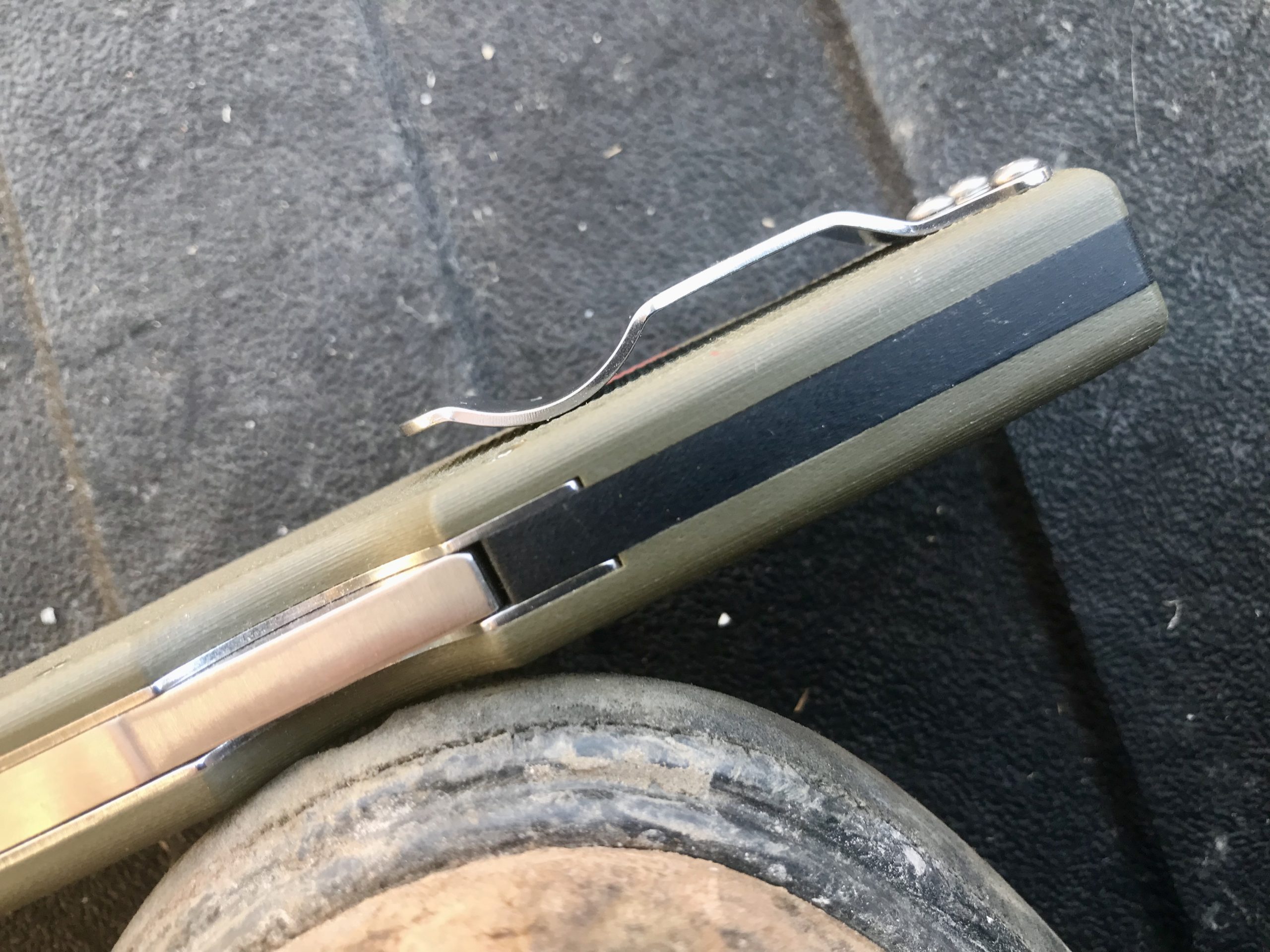The Cold Steel AR1 wasn’t a knife that I thought I’d like when I first saw it. The handle has some unusual geometric cuts, and the clip-point blade looked a bit stubby when the knife was open. But then I held it, and it is now part of my regular rotation.
Some knives, like the Kizer Sheep Dog XL, don’t try too hard to justify their size. They’re big, and that’s the point. The Cold Steel SR1 folder isn’t a huge knife by Cold Steel’s standards—but it is a robust design that has oversized dimensions for a very defined purpose.
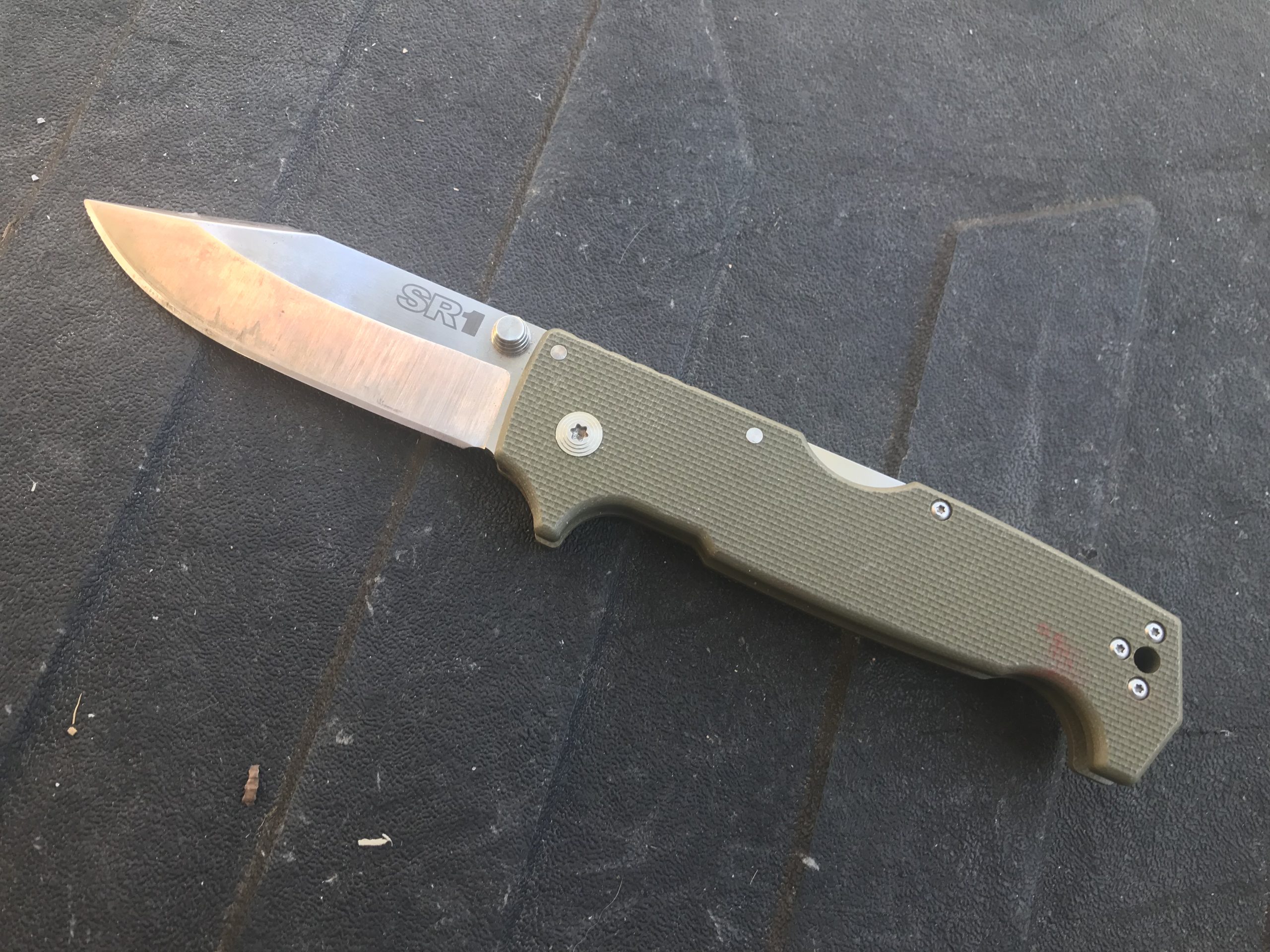
This is a folder built to go to war. Or to work, or the park, or whatever.
Cold Steel SR1 Specs
Weight: 7oz
Blade Thickness: 4.8mm
Blade Length: 4in
Blade Steel: S35VN
Handle Length/Material: 5-3/8in G-10 (OD Green)
Overall Length: 9-3/8in
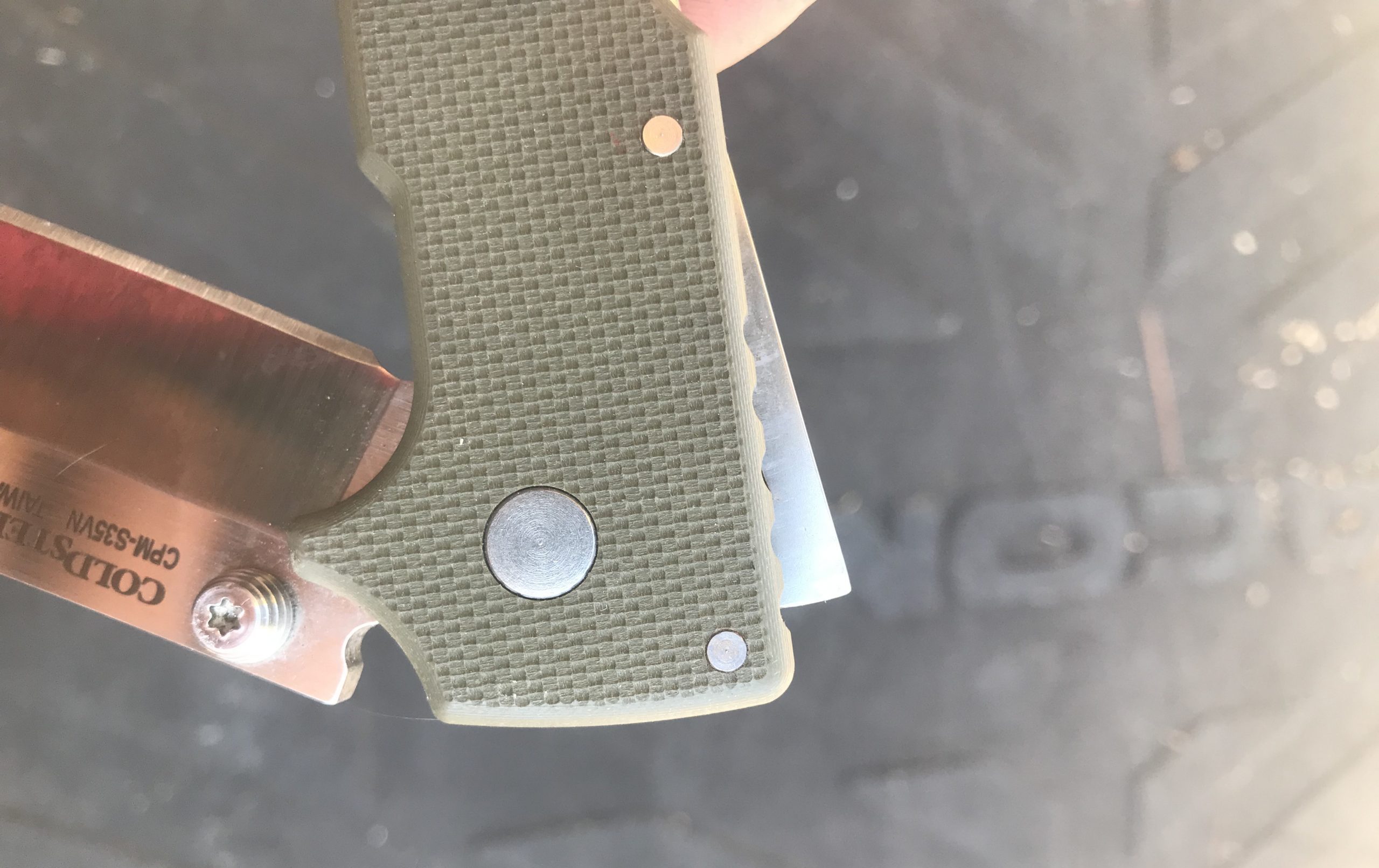
The Cold Steel SR1’s Lock
Cold Steel’s Tri-Ad locking mechanism is a beast. It is similar in design to a lock-back lock, but the lock acts more like a pressure lever that pushes the blade up toward a stop-pin in the handle. This means that the lock’s face doesn’t have to have incredibly tight tolerances—it simply has to exert pressure on the back of the blade.
Normal lock-back designs insert pressure from the lock bar directly against the back of the blade. These two points are secure, so long as no material wears from either surface. Yet every time you open or close the knife, there is some rubbing between the two points.
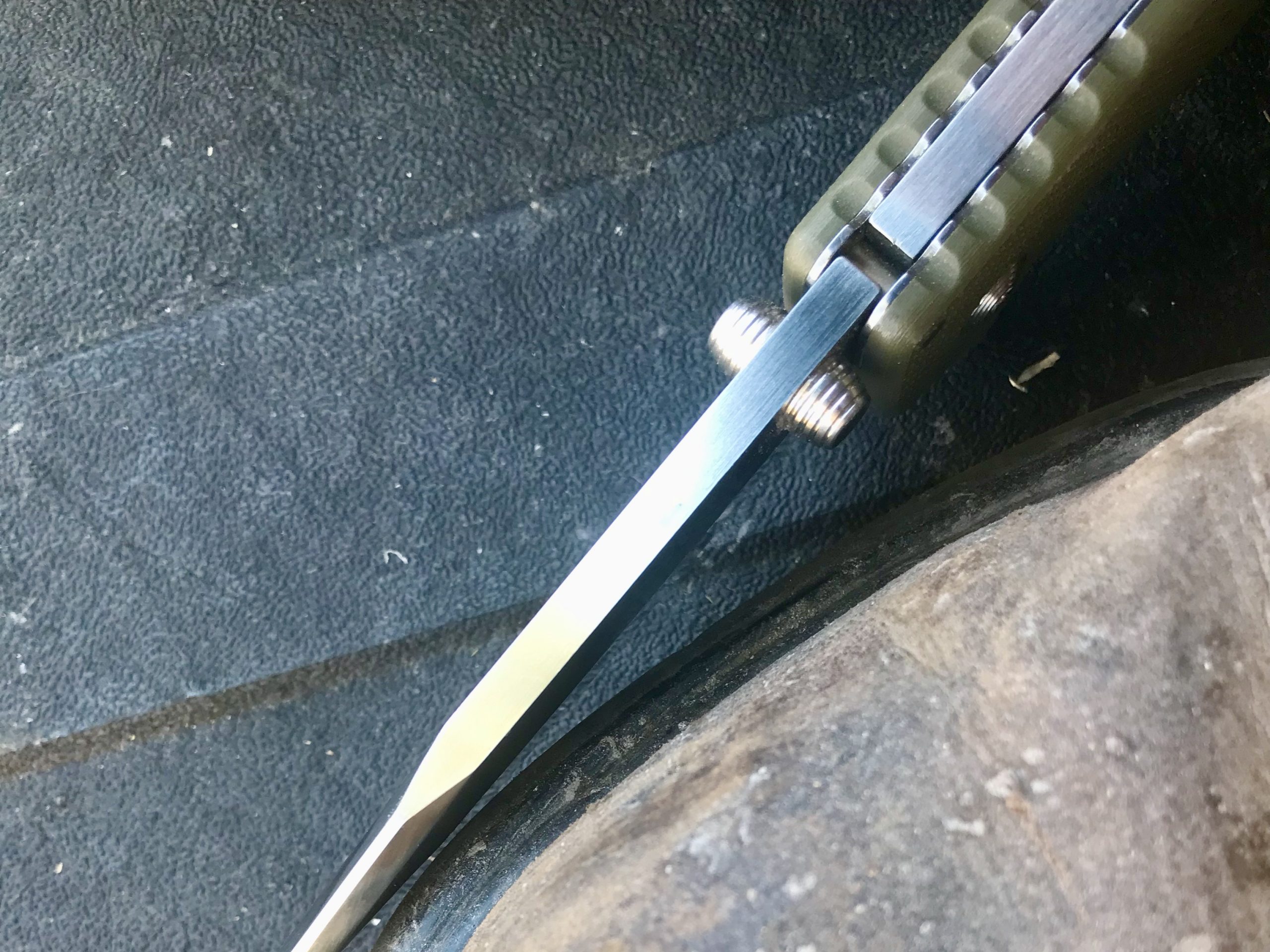
Cheap knives often wear and loosen at this joint. Cold Steel’s design allows for wear, but the wear will never change the strength of the lock-up, as the blade is being held against the stop pin. As long as there is pressure from the lock, this joint holds firm.
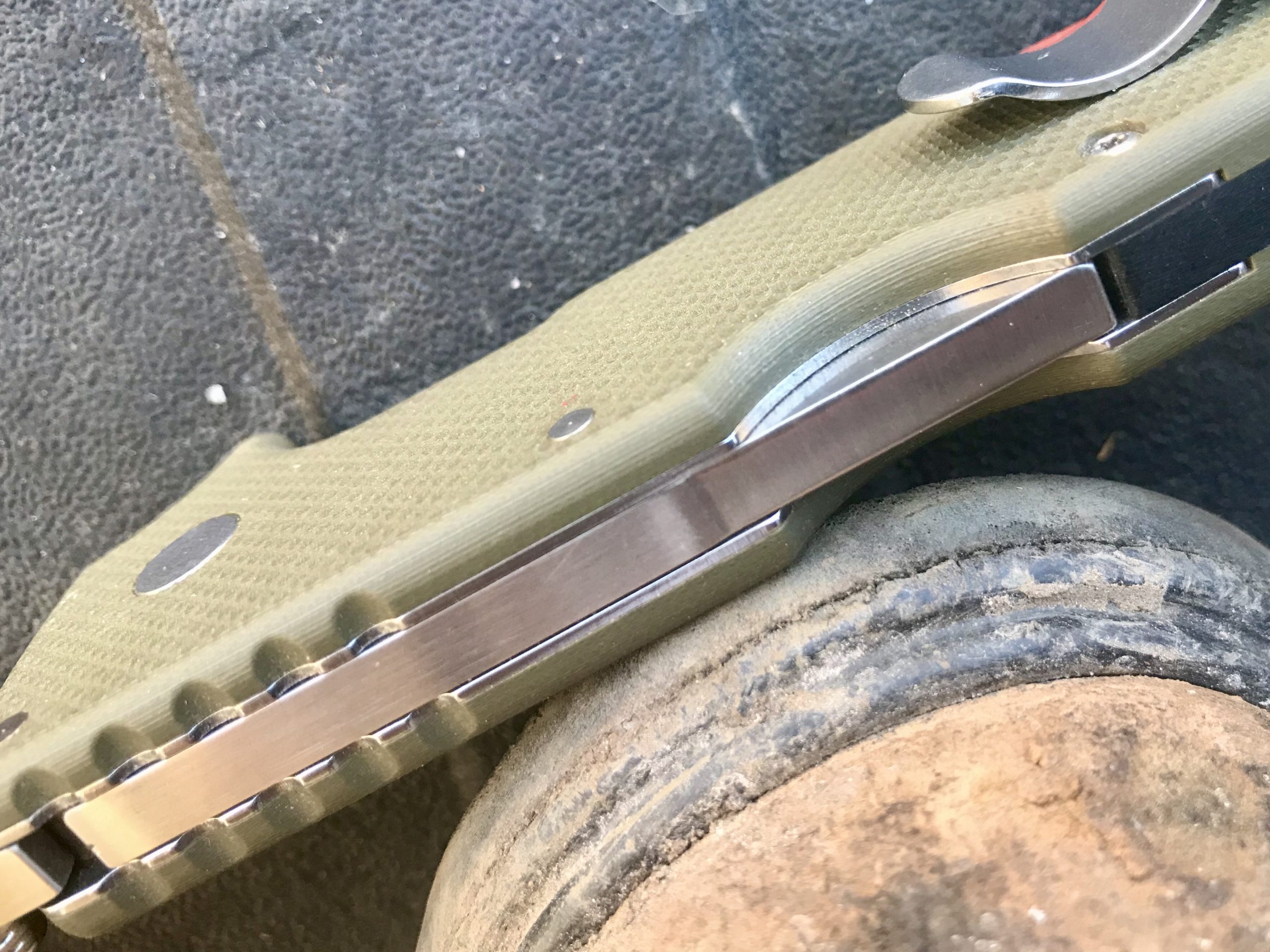
The spring is stout—and the lever itself is shorter than it is on most classic lock-back designs, like the Buck 110, but it is easy to engage and easy to unlock. You might think it would be crazy stiff, but it isn’t.
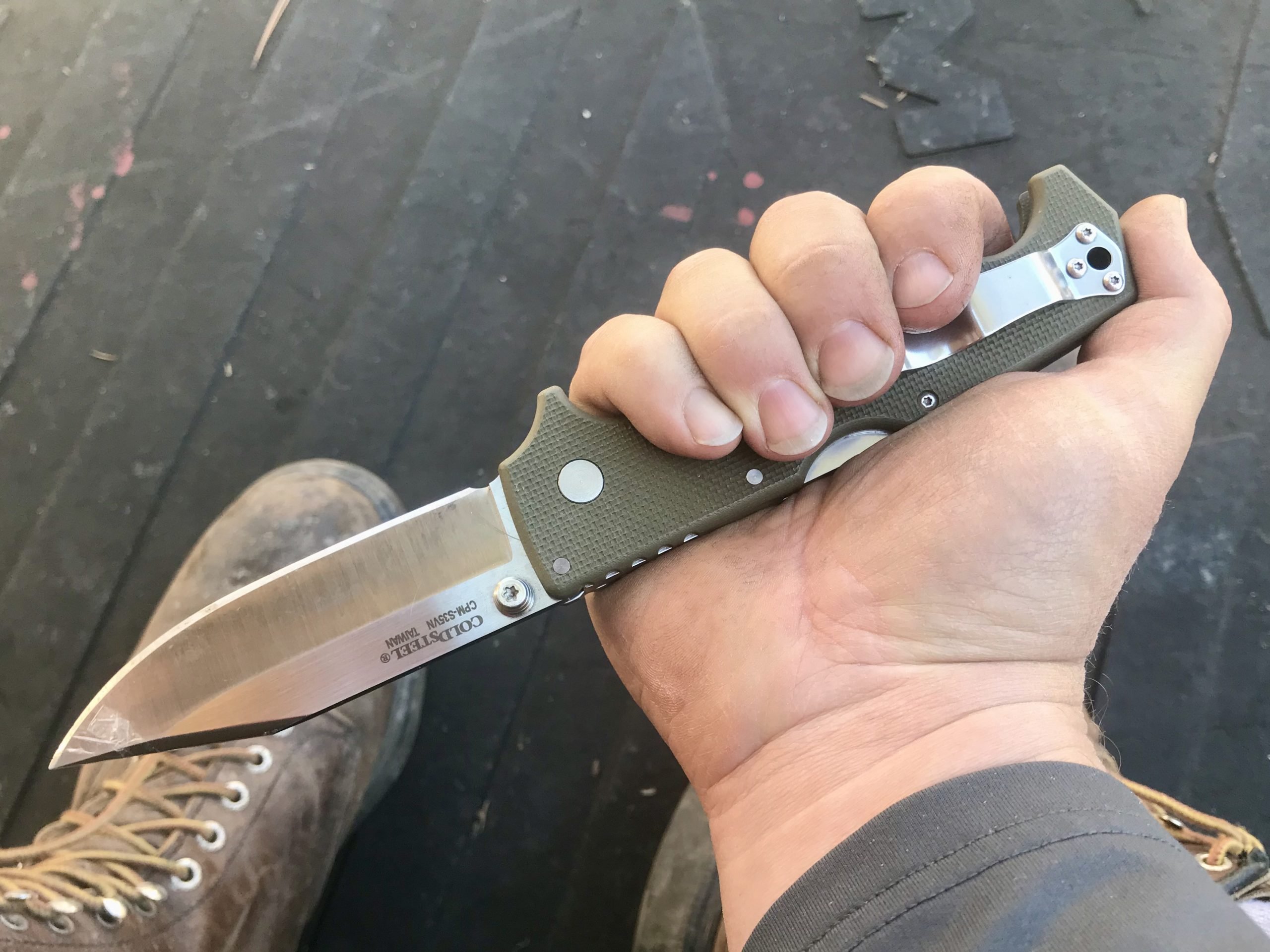
The G10 handle on the Cold Steel SR1
G10 is a hard nylon. It cuts well and holds sharp lines. And the texture on this knife is great for a solid working grip.

There are two distinct shapes at the belly of the handle. One is slightly curved, one more angular. I think this has a benefit for ergonomics, but also allows you to feel which direction the blade is pointing when the knife is open without looking directly at the blade. That’s my guess, anyhow.
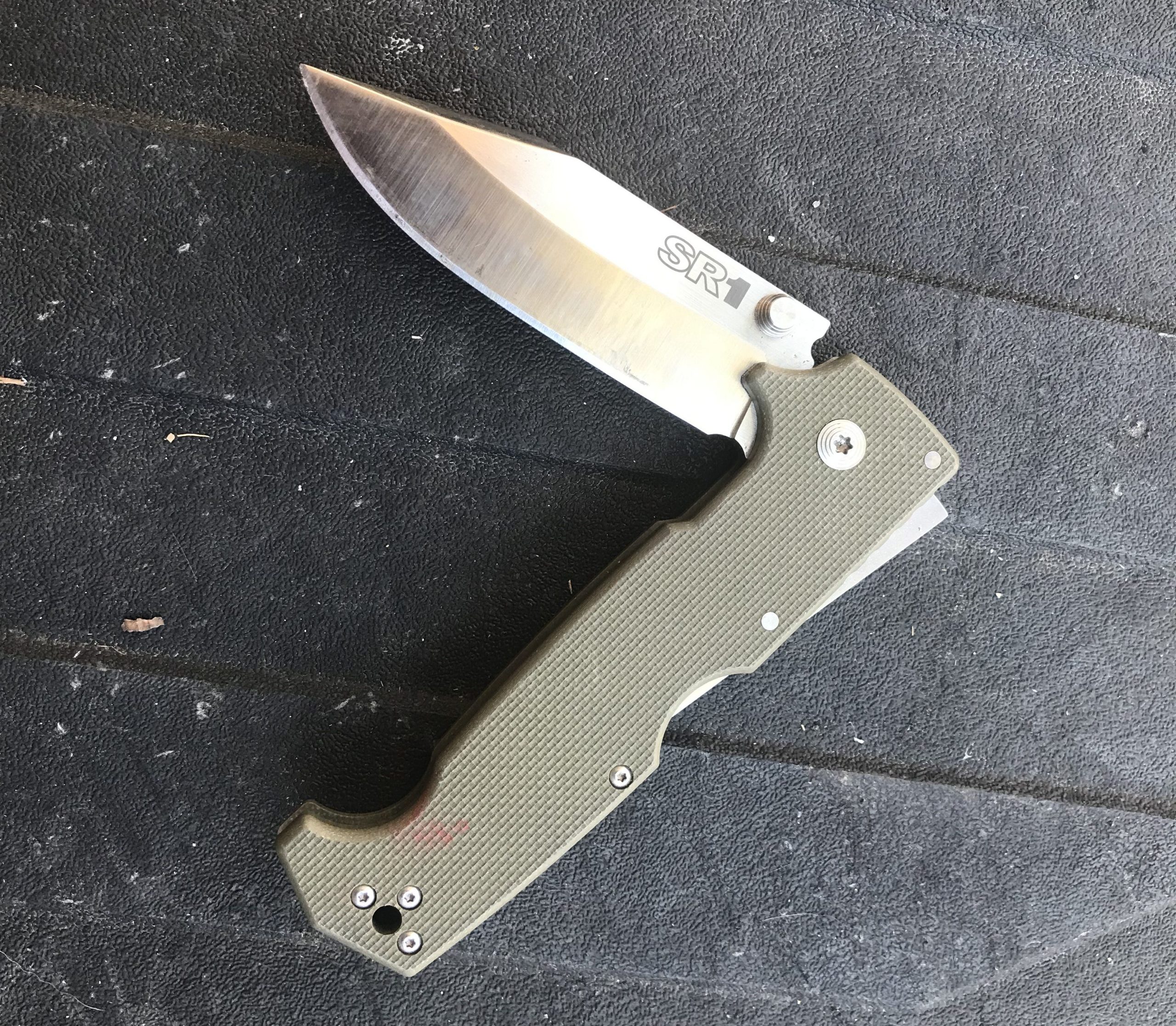
The handle is long, too, allowing for a full grip, even for those of us with larger hands. And you can hold it in any direction without compromise.
Practical use
The Cold Steel SR1 is certainly tough. I’ve used the blade to pry in ways that I wouldn’t even begin to try with other pocket knives. There’s actual integrity to the build thanks to the stainless liners, the width of the blade (just under 1/5 of an inch) and the strong pivot pin.
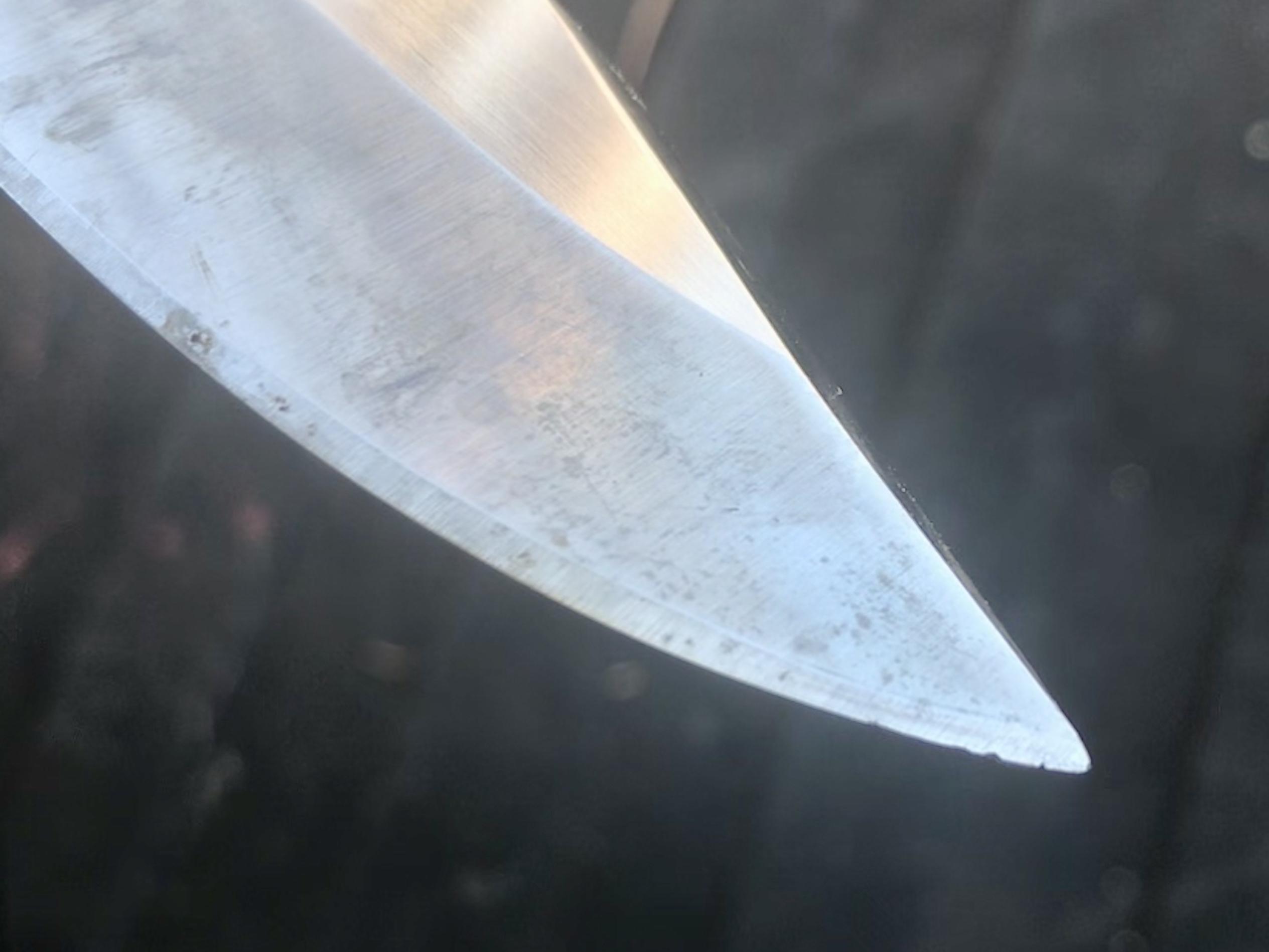
The deep hollow grind of the blade means this isn’t a delicate slicer. The cutting edge is ground for all around utility and not finesse. And the point isn’t as sharp as some other knives Cold Steel makes.

But that doesn’t mean this isn’t a capable knife. I’ve used it on numerous camping and hunting trips. It is holding up like a champ. And it has just enough heft to carry it through really aggressive cuts.
As this is a pocket knife, I wouldn’t recommend batoning with it. But I have. I’ve yet to get the lock to fail, even when wrapping on the back of the blade with a solid log. I’ve split up lots of kindling with this knife and it excels both at splitting and at taking the torque needed to finish off a split by hand.

What the Cold Steel SR1 isn’t
If I’m carrying a sheath knife, I will also have a pocket knife on me. The SR1 functions like a sheath knife for me. And that seems to be the type of work I use it for.

As such, I’ve taken to carrying an old pen knife that has three small, thin, crazy sharp blades for things like peeling apples (I love apples, but hate the peel), and doing anything like whittling.
The SR1 is an incredible tool alone, but an even better addition to a complete kit.
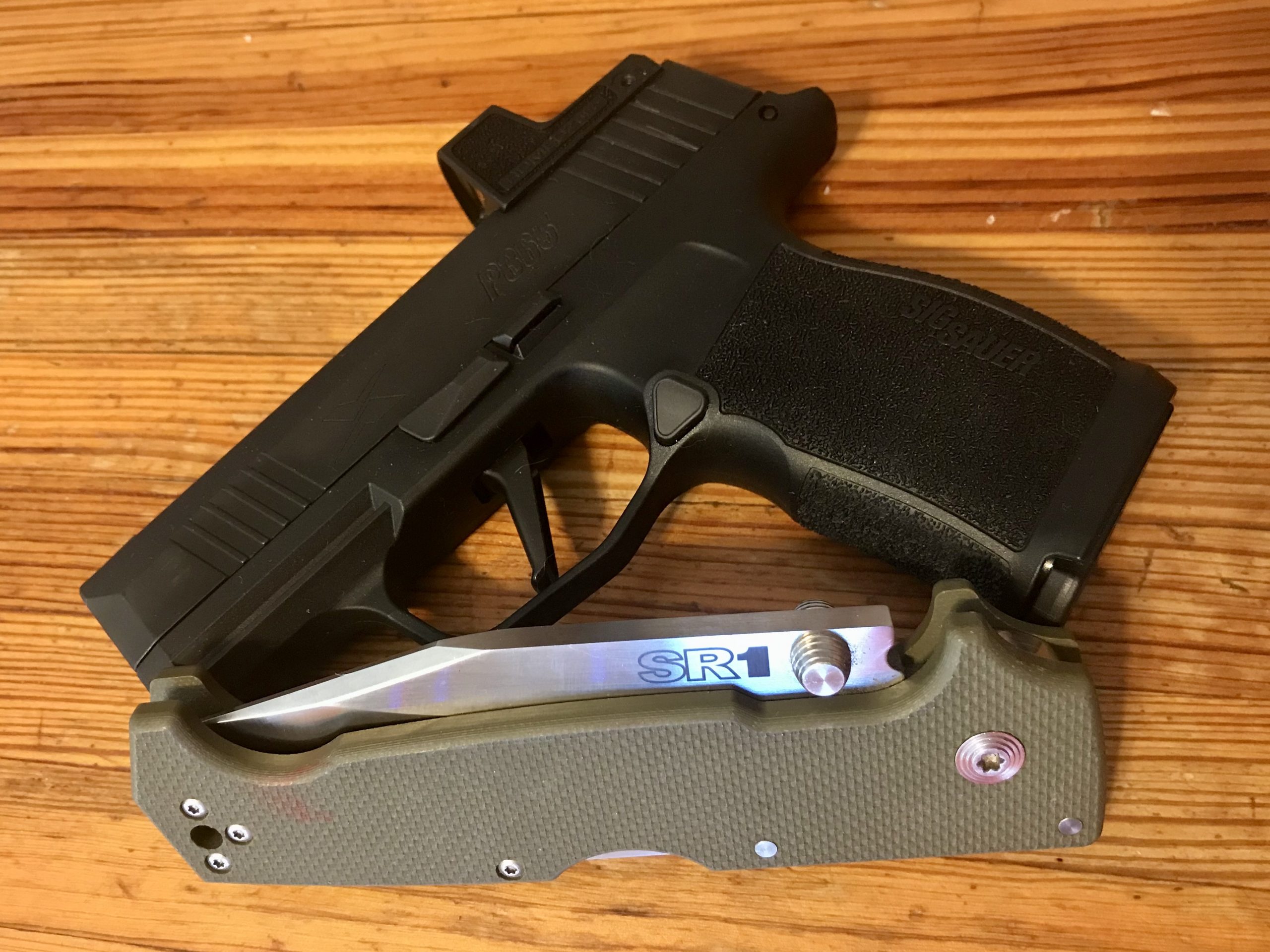
The SR1 for EDC
That said, the Cold Steel SR1 is a great defensive knife. While it isn’t the fastest knife to draw from a pocket, it will make a statement. The thumb stud allows it to be opened fast, and that’s rare for a knife this size with a blade this thick.
And once out, the SR1 is as comfortable with the blade up as it is reversed, with the thumb on the back of the handle and the blade down. Because the handle is long, you can choke up on it or hold way back, which gives a bit more reach with the blade.

The Cold Steel SR1’s MSRP is steep—$269. Retail, though, is more than $100 less, typically. There’s a version with a tanto blade, and an SR1 Lite that trims weight with a thinner blade stock and a FRN handle.
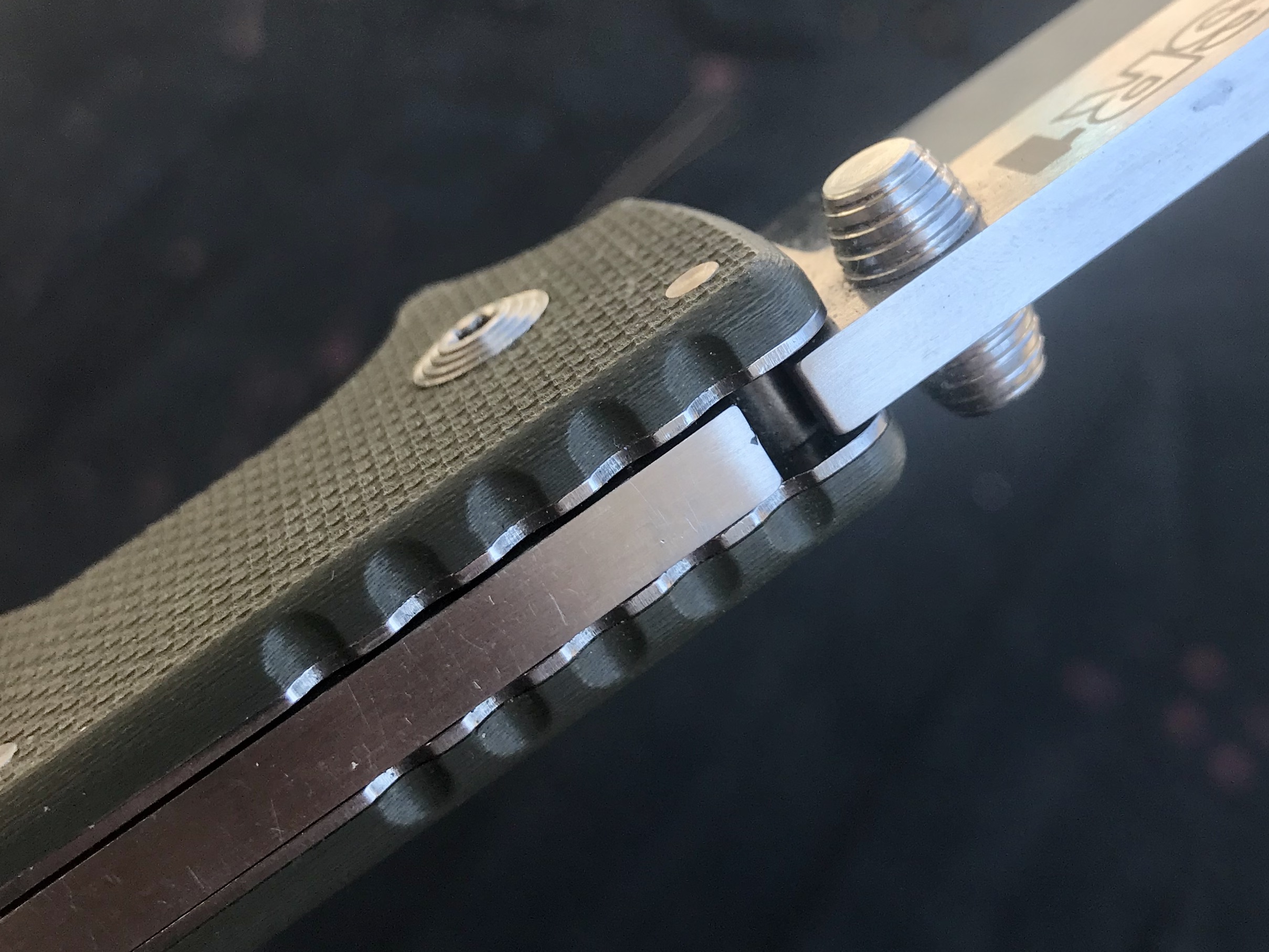
And that’s where I’ll drop the gun analogy. The SR1 fills the same niche as a Sig P365. Small enough to be practical and concealable (i.e., this isn’t a fixed blade), but tough enough to do just about anything else a bigger knife could do.
